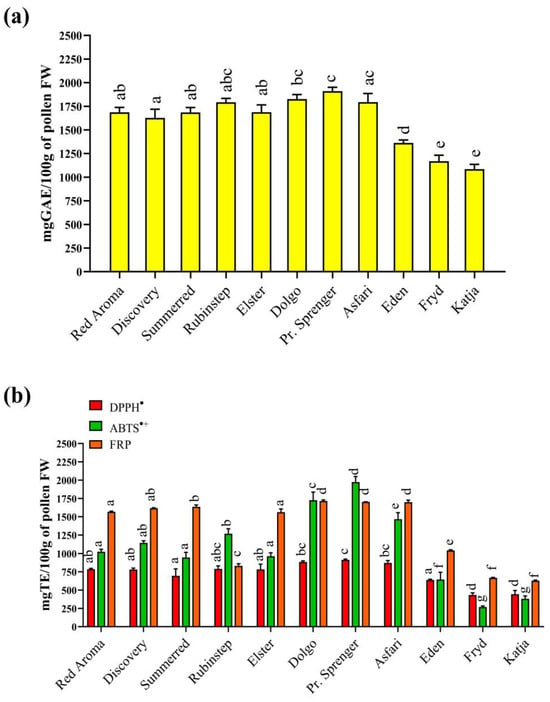Antioxidants, Vol. 13, Pages 1374: Diversity and Chemical Characterization of Apple (Malus sp.) Pollen: High Antioxidant and Nutritional Values for Both Humans and Insects
Antioxidants doi: 10.3390/antiox13111374
Authors:
Milica M. Fotirić Akšić
Mirjana B. Pešić
Ilinka Pećinar
Aleksandra Dramićanin
Danijel D. Milinčić
Aleksandar Ž. Kostić
Uroš Gašić
Mihajlo Jakanovski
Marko Kitanović
Mekjell Meland
Pollen represents a reward for pollinators and is a key element in plant–insect interactions, especially in apples, which are entomophilous species and require cross-pollination to produce economically valuable yields. The aim of this study was to analyze the chemical content of the pollen in 11 apple cultivars (‘Red Aroma’, ‘Discovery’, ‘Summerred’, ‘Rubinstep’, ‘Elstar’, ‘Dolgo’, ‘Professor Sprenger’, ‘Asfari’, ‘Eden’, ‘Fryd’ and ‘Katja’) grown in Norway and try to establish a relationship between them and insect attractiveness. In the applied chemical analysis, 7 sugars and sugar alcohols, 4 organic acids, 65 phenolic compounds, 18 hydroxycinnamic acid amides (phenylamides), a large number of polypeptides with a molecular weight of 300 kDa to <6.5 kDa, lipids, carotenoids, starch, pectin and cellulose were determined. The crab apples ‘Dolgo’ and ‘Professor Sprenger’, which are used as pollenizers in commercial orchards, had the highest level of sucrose, total polyphenol content (prevent oxidative damages in insects), antioxidant capacity, hydroxybenzoic acids and derivatives, quercetin and derivatives, dihyrochalcone, epicatechin, putrescine derivates, and proteins with molecular weight 66–95 kDa and >95 kDa, which made them interesting for insect pollenizers. Only the pollen of the crab apples contained quercetin-3-O-(2″-O-malonyl)-hexoside, which can be used as a marker for the apple species Malus sylvestris (L.) Mill. Apple floral pollen is a rich source of bioactive components and can be used to prevent and/or cure diseases or can be included in diets as a “superfood”.
Source link
Milica M. Fotirić Akšić www.mdpi.com

